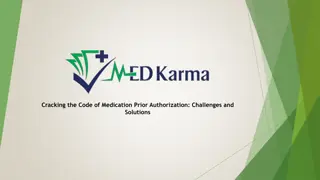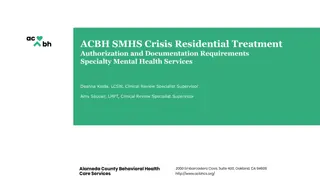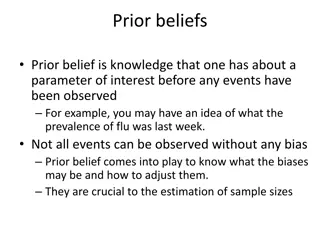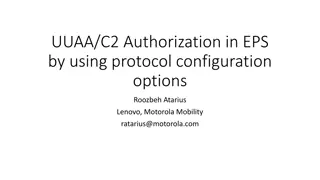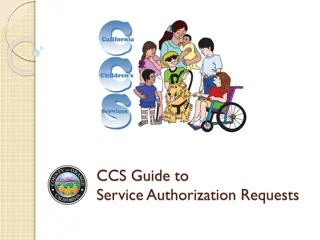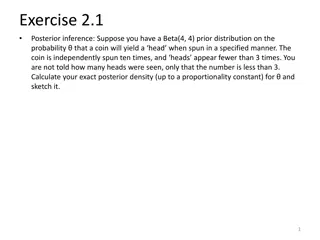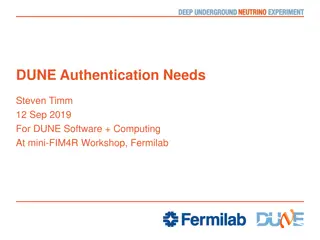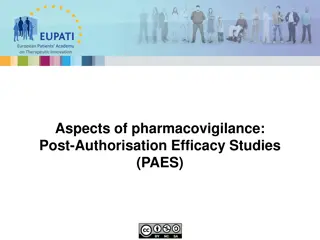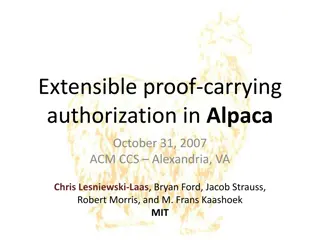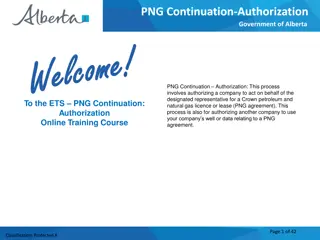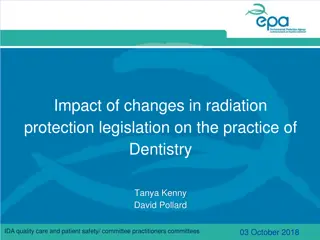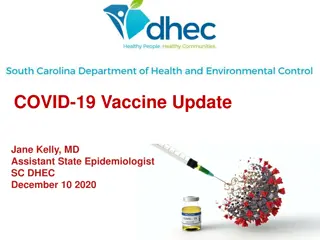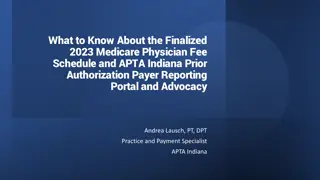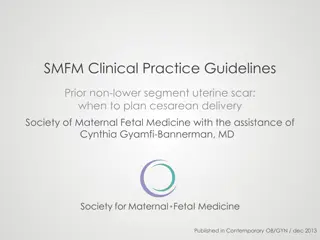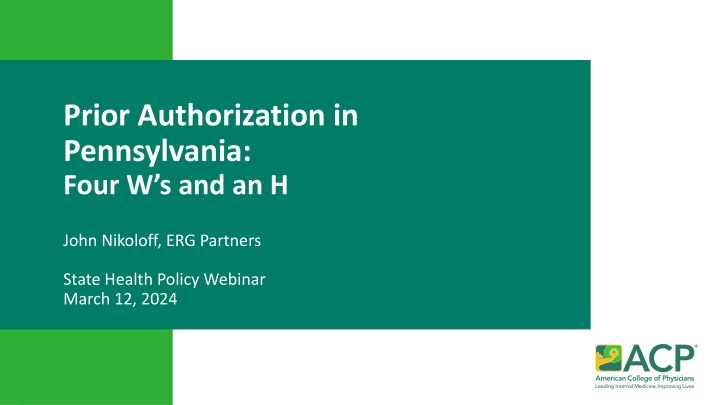
Pennsylvania Prior Authorization Reform: Impact, Implementation, and Results
Explore the Pennsylvania prior authorization reform initiative, including its goals, key stakeholders, legislative journey, and outcomes. Discover how this reform seeks to improve healthcare transparency, streamline processes, and ensure timely access to care while involving a wide range of stakeholders and state agencies.
Download Presentation

Please find below an Image/Link to download the presentation.
The content on the website is provided AS IS for your information and personal use only. It may not be sold, licensed, or shared on other websites without obtaining consent from the author. If you encounter any issues during the download, it is possible that the publisher has removed the file from their server.
You are allowed to download the files provided on this website for personal or commercial use, subject to the condition that they are used lawfully. All files are the property of their respective owners.
The content on the website is provided AS IS for your information and personal use only. It may not be sold, licensed, or shared on other websites without obtaining consent from the author.
E N D
Presentation Transcript
Prior Authorization in Pennsylvania: Four W s and an H John Nikoloff, ERG Partners State Health Policy Webinar March 12, 2024
Why? This one really doesn t need a slide, does it? 2
What? (Goals) Standardize the system. Improve transparency by insurers Ensure proper care can be delivered in a timely fashion. Expand services not requiring prior authorization. Better define medical necessity. Ensure peer to peer reviews. Systematize step therapy approval processes. 3
Who? More than 30 stakeholder groups 50-member Patient Care Coalition Physicians organizations (PA-ACP was designated a lead) The State Hospital and Health System Association The state s Blues plans and the Insurance Federation of Pennsylvania (commercial insurers) Integrated Delivery Networks State Agencies overseeing insurance, managed care Advocates for the poor, urban coalitions, drug treatment providers, Medicaid MCO companies, and PhRMA 4
When? Introduced in State Senate March 18, 2021 Moved from Committee with amendments June 22, 2021 Amended in Senate Appropriations Committee June 29, 2022 To State House September 20, 2022 Amended on the Floor October 25, 2022 Passed House October 26, 2022 Concurrence in Senate October 26, 2022 Signed by Governor, Act 146 November 3, 2022 6
How? (Key Factors) Bipartisan cosponsorship Legislative Champions Legislators with negative prior authorization experiences Grassroots advocacy days, engagement of leadership Active engagement of state Chapter leadership Involvement of five State Agencies (Drug and Alcohol Programs, Health, Human Services, Insurance, Governor Self-interest of Integrated Delivery Networks Pressure and assistance from edge stakeholders 7
Results Includes all insurers plus state Medicaid and CHIP MCOs Expands definition of closely related services for P.A. Expands definitions of urgent and emergency services Time frames standardized from 24-72 hours Require 30 days notification of changes and transparency in services requiring PA Mandates review by practitioner in same/similar specialty Expands medical or scientific evidence and clinical standards Continuity of care required for 60 days 8
Results Step therapy, first-fail exceptions Medication Assisted Treatment requirements, exceptions Requires peer-to-peer appeals in same specialty Allows standing referrals to specialists for life-threatening, degenerative, or disabling disease or condition Requires insurer network sufficiency Requires payment of clean claims in 45 days Institutes external appeals process within state Insurance Department 9
Thank you and good luck! John Nikoloff, ERG Partners For PA-ACP Services, Inc. john@pa-erg.com


